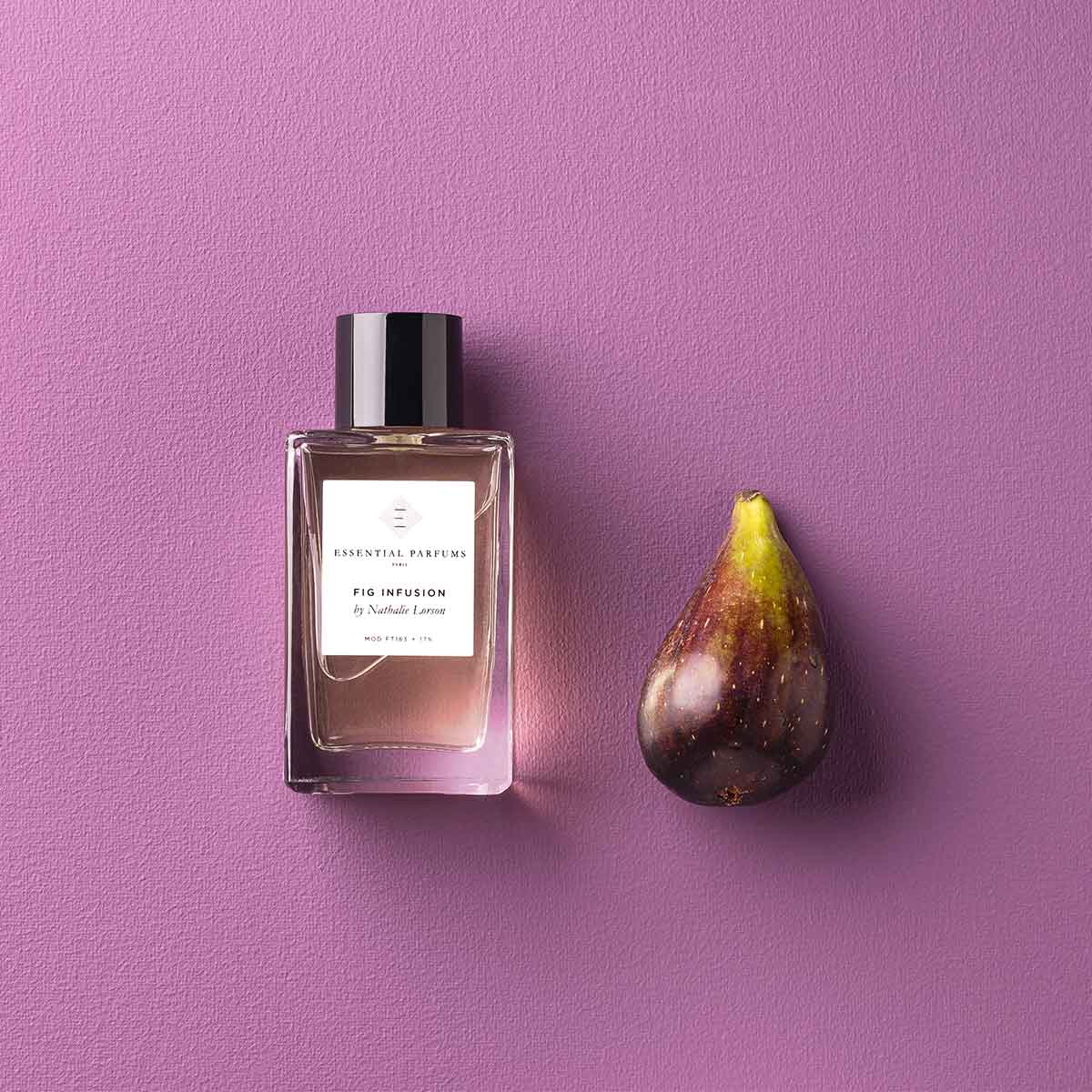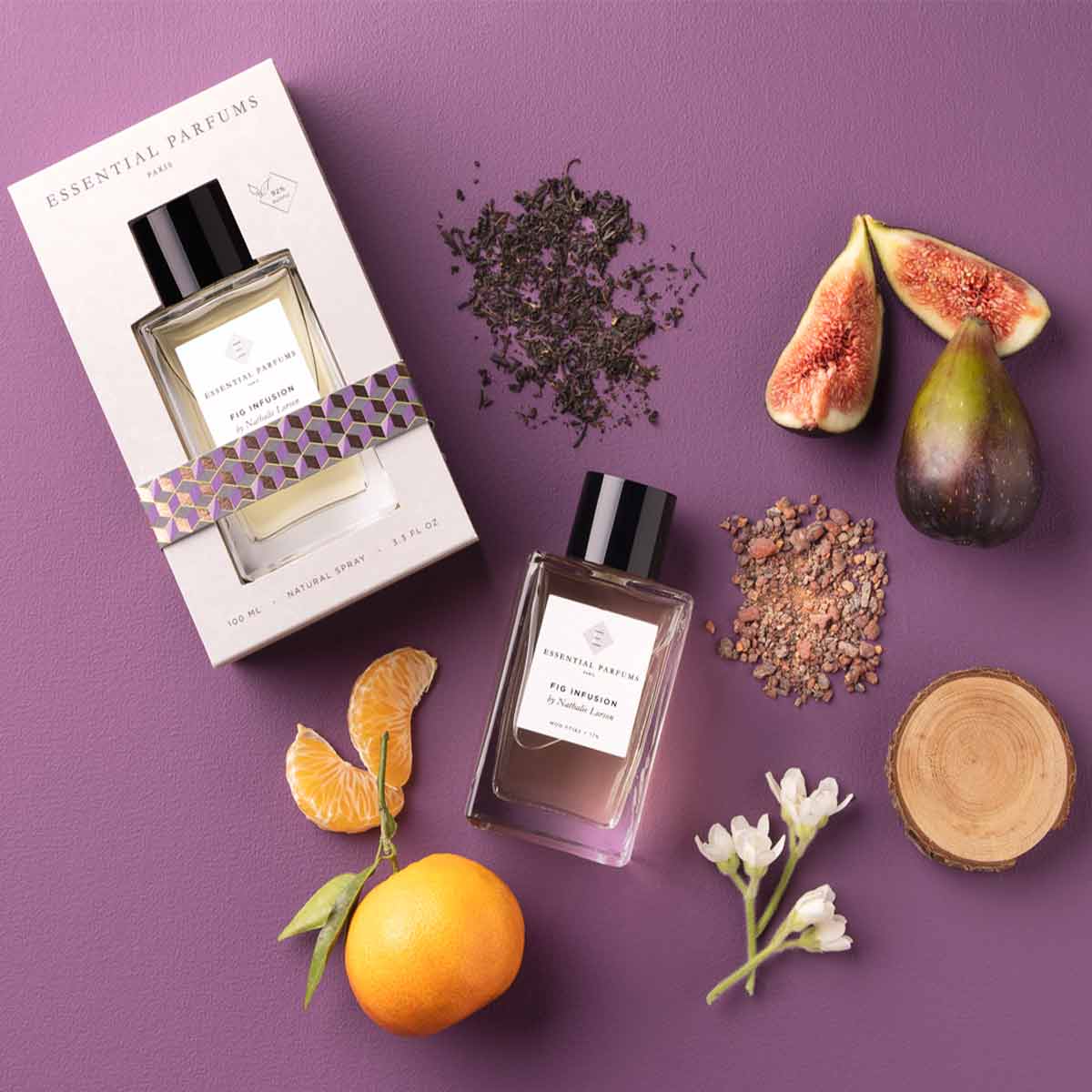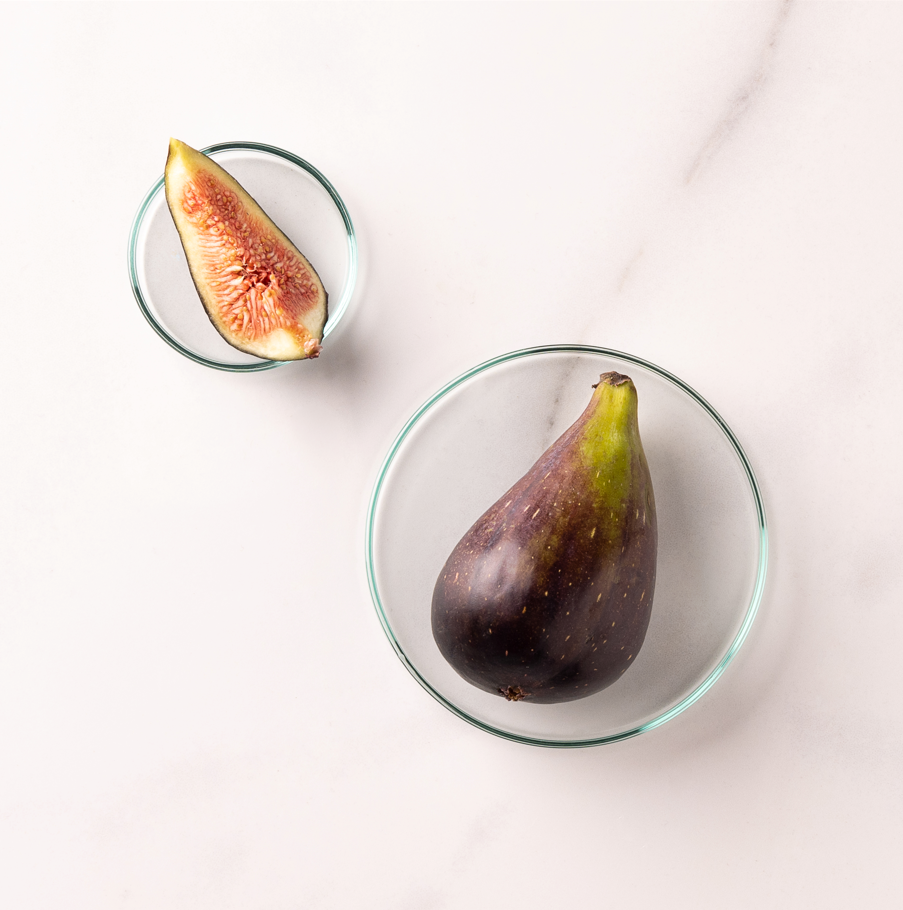The fig, Essential Parfums’ new muse
par Essential ParfumsAre you curious and intrigued by this mysterious ingredient? You’ve come to the right place!

Admired since the beginning of our era, the fig tree appears several times in ancient texts as a constant sign of peace and prosperity.
Fig fever continued in Europe, even in France, where King Louis XIV’s enthusiasm for this delicious fruit led him to plant more than 700 fig trees in his royal kitchen garden at the court of Versailles.
An olfactory jewel
The fig, a jewel of the world for thousands of years…
If the fruit of the fig releases a succulent odour, you should know that its wood and leaves are also fragrant.
Fig leaves smell green, with bitter undertones, as well as light woody and earthy notes, making its scent both tasty and fresh and shady.
The fruit, on the other hand, is much rounder and more enveloping. Soft and milky, its scent also carries hints of an earthy fragrance. An intriguing ingredient, full of complexities, that one falls in love with immediately.
Nevertheless, the fig notes we smell in modern perfumery are mostly synthetic (see article on synthetics). As with many fruits, except citrus, it is not possible to extract an essential oil directly from this raw material. But fear not, fortunately for us, the talent of Natalie Lorson who works with Essential Parfums comes into play.
Fig infusion perfumer Natalie Lorson tells us about her interpretation:
“I imagined a luminous fragrance full of joy and pleasure. The scent reminiscent of an afternoon dreaming in the orchard, comfortably seated under the fig trees.”
The fig infusion fragrance is 93% natural ingredients. The top note is a larger-than-life fig, illuminated by a duo of juicy citrus fruits. The floral heart, composed of freesia and orange blossom, meets the aromatic breath of Sri Lankan black tea. Finally, an enveloping woody accord between the softness of cedar and the creaminess of sandalwood brings comfort and refinement to the signature scent.
Did you know that?
- It is said that the expression “half fig, half grape” originated in ancient times, when the Corinthians, who were trading with the Venetians, slipped figs into their deliveries of grapes (figs being cheaper and heavier). The Venetians, discovering the ploy, had a mixed reaction: annoyed at having been deceived in this way, but relieved to have figs in return.
- Figs are not fruits but inverted flowers. Fig trees do not flower like apple or pear trees. Their flowers bloom inside the pear-shaped receptacle that will give the fruit we eat.
Let yourself be tempted: Discover FIG INFUSION

